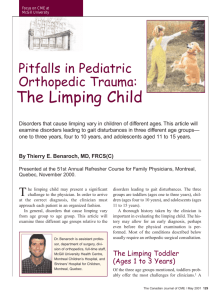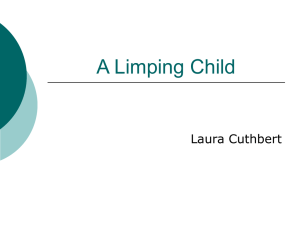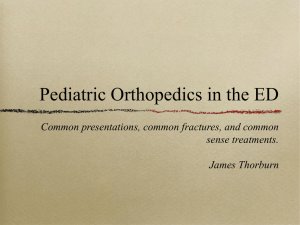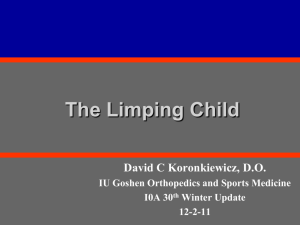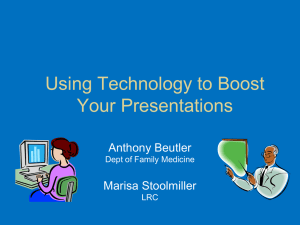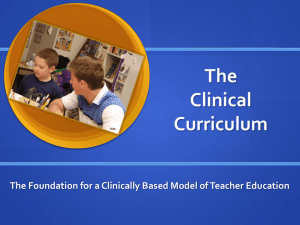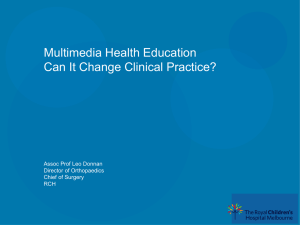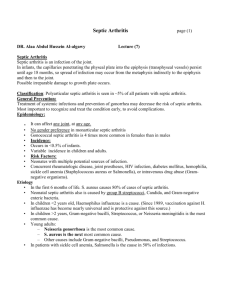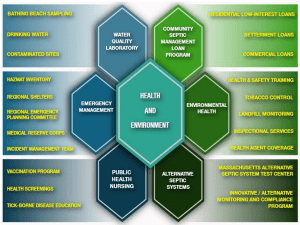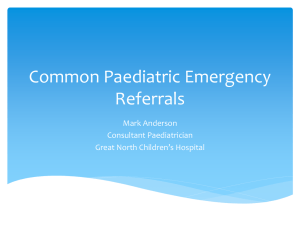The limping Child and Childhood Injuries
advertisement
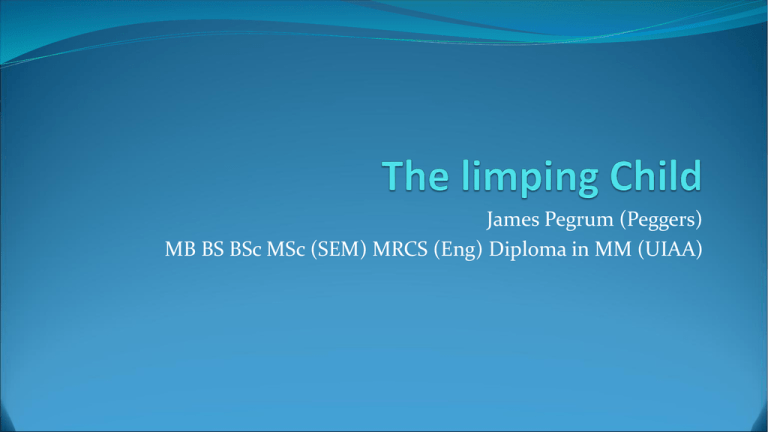
James Pegrum (Peggers) MB BS BSc MSc (SEM) MRCS (Eng) Diploma in MM (UIAA) Overview The limping child Assessment of limping child Key conditions and their concepts Limping children Causes? What is the biggest worry? How do you diagnose it? Limping Child Age Potential problem 0-5 Septic arthritis DDH / CDH 5-10 Perthes Trauma 10-15 SUFE Trauma Who needs admitting? Limping child assessment History Trauma DDH Female, FH, First Born, breech Systemically unwell any URTI, viral sx Pregnancy and birthing Vaccination and milestones Examination Observations Examination of all joints and Back/hips/knees/feet/sole Septic screen rest of patient - ask paeds Investigation Bloods CRP/ESR/WCC AP Pelvis and frog-leg lateral Consider XR other joints Tib-fib in toddlers – Toddlers # Case 1 13 year old chubby boy Painful knee after PE 7 days ago No trauma Limping on presentation Radiology Limping Child Classification Clinical Loder’s Weight bearing at presentation Non weight bearing at presentation Radiological Degree of slip Mild <30% Moderate 30-60% Severe >60% Clinically History Weight bearing status and time frame Risk factors Obesity / osteodystrophy / Hypothyroidism Examination A hip that ER and abducts with flexion Investigations Rule out endocrinopathies pathologies radiographs Operative Management Case 2 6 year old boy Left sided limp last 2 weeks No history of trauma Inflammatory markers normal Afebrile Clinically Idiopathic AVN of the proximal femoral epiphysis in childhood Why this age? Change in blood supply from metaphyseal to epiphyseal History Bilateral in 20% Other causes of AVN Clinically Reduced range of movement Investigations Causes of AVN Classification Multiple and complex Waldenstrom – pathological stages Initial vascular event – may have cresent sign on radiographs Fragmentation Re-ossification or resolution Remodelling or healed Herring classification / Catterall – radiographic fragmentation A – no collapse of lateral pillar B - <50% collapse (I-II) C - > 50% c0ollapse (III-IV) Management Symptomatic relief 2. Head containment 3. Restoration of movement 1. Age < 6 years conservative management Age 6-9 severe grades osteotomy and cover femoral head Age 9 operative containment in most Case 3 3 year old girl 24 hours history of fever malaise Reluctance to weight bear Septic Arthritis Clinically History Recent URTI Vaccination Hx RF – prematurity and C section Examination Fevers no other source Irritable hip held in FABERs position Investigations Bed side Bloods Radiology Likelihood of septic Arthritis? Kocher 1999 JBJS (Am) Not weight bearing / fever / WCC > 12 / ESR > 40 Features % chance of Septic arthritis 0 0.2 1 3 2 40 3 93.1 4 99.6 Septic arthritis Aspiration Rapid joint destruction Send for MC&S Urgent Gram stain Crystals Treatment • Aspirate • Antibiotics • Joint washout Case 4 A 2 year old with a limp 1st born, breech position No trauma Classification Dislocated Dislocatable – Barlow positive Subluxable – Barlow Suggestive Clinically History Pregnancy / Birth / mile stones RF – 1st born, female, FH, oligohydramnios, breech Clinically Reduced abduction Barlow – dislocates hip by adduction and depression in flexed hip Ortolani – reduces hip by elevation and abduction Radiology US if < 6months Management 1. Early concentric reduction 2. Head coverage to allow normal development of head and acetabulum Non operative <6/12 – pavlik harness if reducible 6-18/12 – hip spica Operative Arthrogram and closed reduction Open reduction Open reduction +/- pelvis or femoral osteotomy Summary Reviewed the Differentials of a limping child Septic arthritis DDH Perthes SUFE Broadly assessed by age Management options
